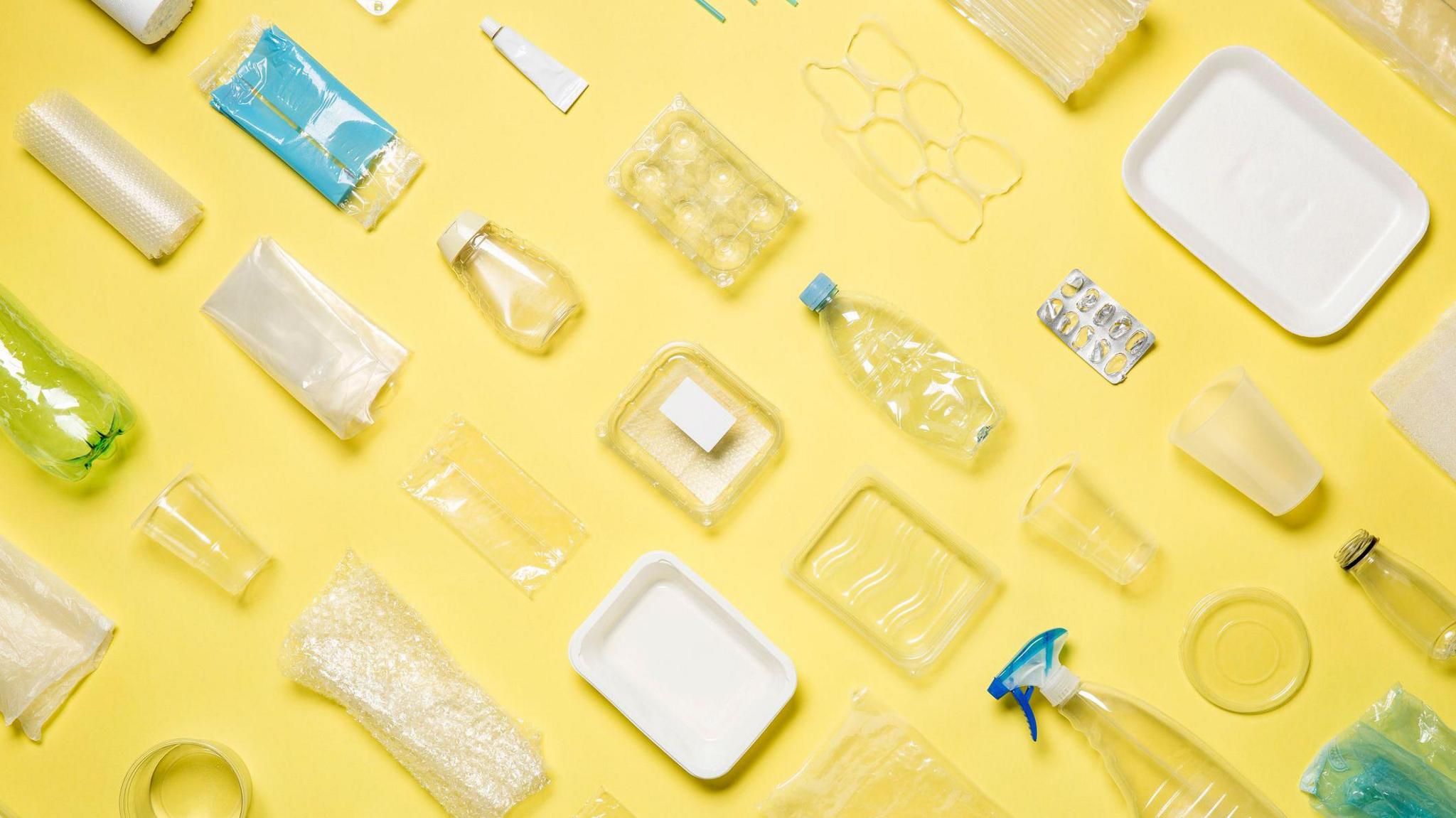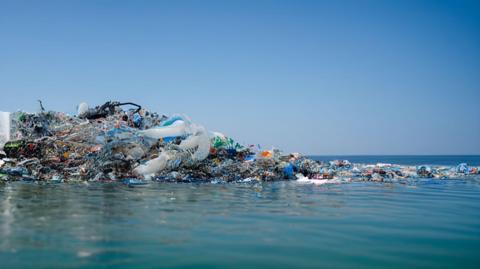 Image source, Getty Images
Image source, Getty ImagesPlastic is in lots of things we use from clothing to crisp packets, and bottles to buckets.
Making things from plastic is popular because there are many different types - and it can be made in to all sorts of shapes, colours and sizes.
It can be coloured or clear, thick or thin, strong or weak.
If you look around your home or school, you'll find most things have plastic in them, including your pencil case, games consoles, and even clothing.
Plastics are man-made and can be produced from natural materials like coal and oil.
This video can not be played
Watch: Why is plastic a problem?
Plastic pollution is when plastic waste ends up in the environment, and it can damage our oceans, rivers, lakes and beaches.
The main problem with plastic is that most of it isn't biodegradable.
That means it doesn't break down in the environment like paper or food, so instead it can hang around for hundreds of years.
Each year, 400 million tonnes of plastic is produced and 40% of that is single-use - plastic we'll only use once before it's binned.
Examples of single-use plastic are carrier bags, drinks bottles and crisp packets.
This video can not be played
Watch: Plastic microbeads banned in the UK
Millions of tonnes of plastic enters the world's oceans each year and most of that escapes from land.
Tiny bits of plastic, called microplastics, have also been found in things like the food we eat and soil in the ground and even in the air we breathe.
It can be blown into the sea from ships and beaches, or carried there by river. Some also gets flushed down the toilet.
Another issue is that not all plastic can be recycled.
This might be because of the way it is made up or because it is too expensive or difficult to do.
This video can not be played
Watch: What are the hardest products to recycle?
In March 2022, nearly 200 UN countries agreed to start negotiations on an international plan on how to deal with plastic waste.
World leaders are trying to agree the plastic pollution treaty - setting rules on how plastic is made, used and thrown away - and how the treaty is paid for.
This year's World Environment Day comes exactly two months before countries meet in Switzerland to continue negotiating a global agreement to end plastic pollution.
The UN Environment Programme (Unep) aims to bringing countries together to try to work on issues that affect the planet.
According to the programme, plastic pollution is one of the defining environmental challenges of our time.
Comments can not be loaded
To load Comments you need to enable JavaScript in your browser


 Image source, Getty Images
Image source, Getty Images